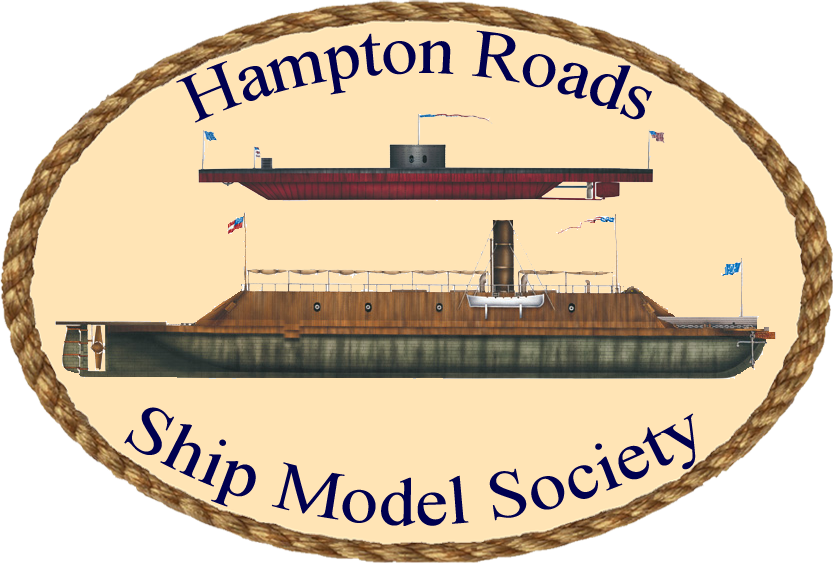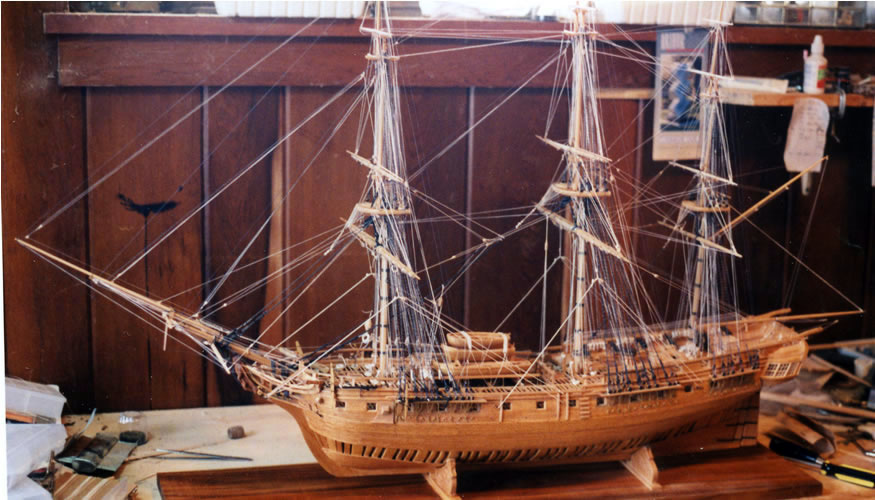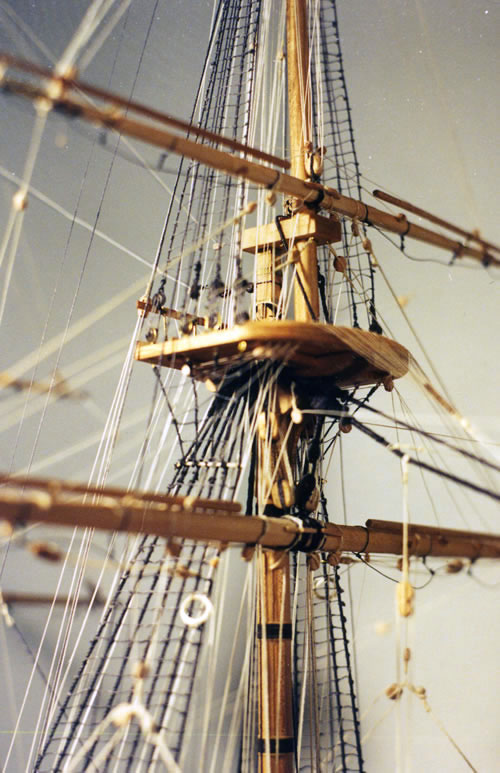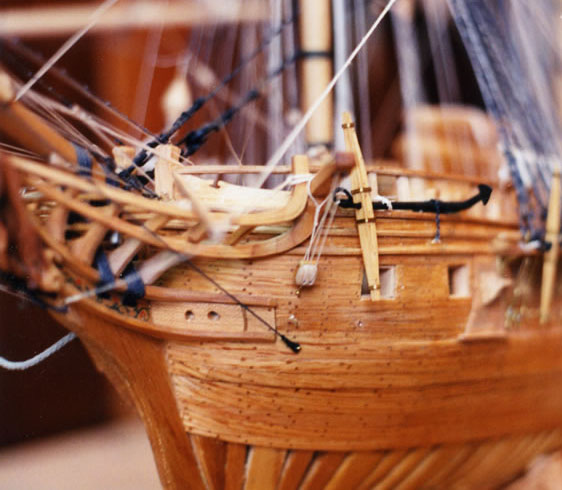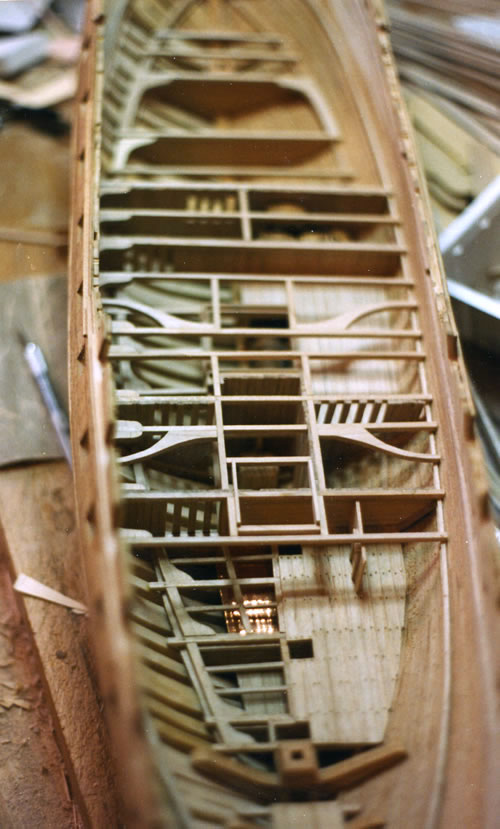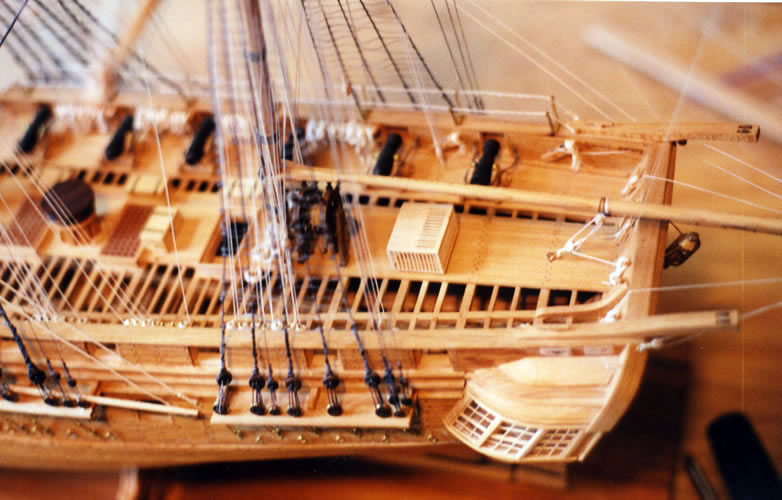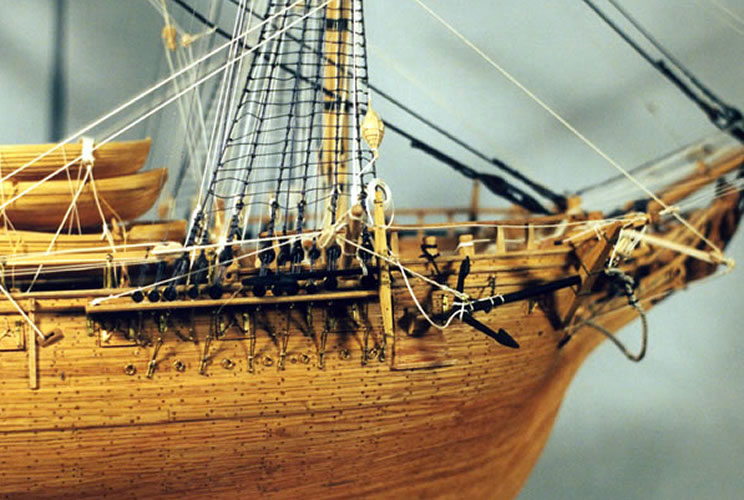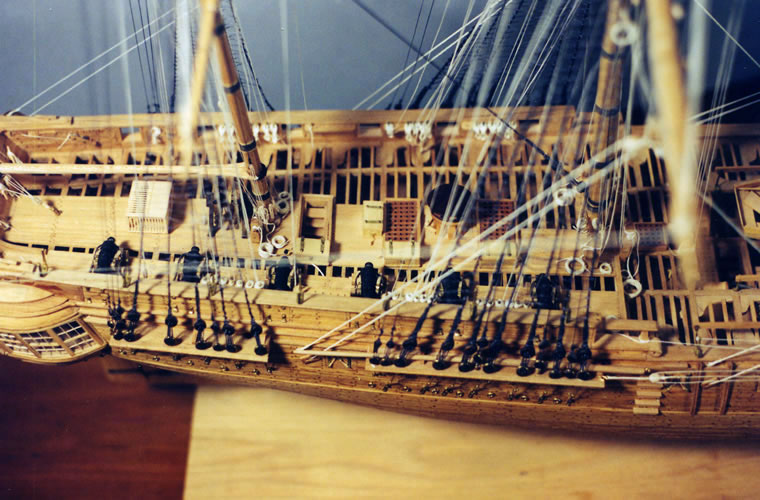
by Gene Andes
Categories:
- Build type: [Scratch]
- Material: [Wood]
- Scale: [1:64 (3/16" = 1')]
- Subject Type: [Frigate]
- Era: [1700-1815]
- Nationality: [United States]
- Propulsion: [Sail]
The text is from the model maker’s personal website
Essex was launched in Salem, Massachusetts, built by Enoch Briggs. She was paid for by public subscription of the citizens of Salem and Essex County, and donated to the United States later that year.
Edward Preble commanded Essex on her maiden voyage in 1800 during which she, in company with USS Congress, convoyed merchant ships from Batavia. In 1801, under William Bainbridge, she sailed to the Mediterranean for actions against the Barbary Powers, where she remained until 1806.
During the war of 1812, Essex, under David Porter, was active in the South Atlantic and later the Pacific, decimating British shipping and whaling fleets. In 1814, she was trapped in neutral Valparaiso, Chile, by the HMS Phoebe and HMS Cherub, and after a long engagement with the superior enemy forces, and the loss of 155 men, Essex surrendered. She was repaired by the British and taken into the Royal Navy, serving as a prison ship in Jamaica, and was sold off in 1837.
The Essex was armed with carronades at the time of her capture, and some attributed her loss to the greater range of the British long guns, which were able to bombard Essex while remaining out of reach of her carronades.
The exploits of the Essex against the British whaling fleet were in large the inspiration for Patrick O’Brien’s book “Far Side of the World”, recently made into the movie “Master and Commander”. The ship in the book and the movie, however, was French (the Archeron), so as not to offend O’Brien’s increasing US readership, but that ship’s structure was based on the Constitution, a larger and more heavily built frigate than the Essex, or the Raleigh, or the HMS Surprise – something British frigates found out early in Constitution’s career.
The model was built from plans by Portia Takakjian using her Anatomy of Ship text for supplemental information.
General Characteristics
- Displacement
- 850 tons
- LBP
- 140’
- Breadth
- 31’
- Draft
- 12’3″
- Complement
- 300
- Armament
- 26 x 12-pound long guns, 10 x 6-pound guns (probably with carronades from the outset*)
*Robert Sumrall, personal communication
